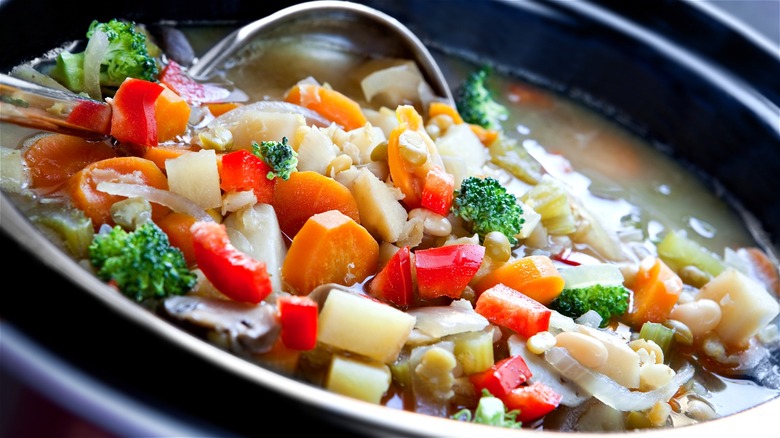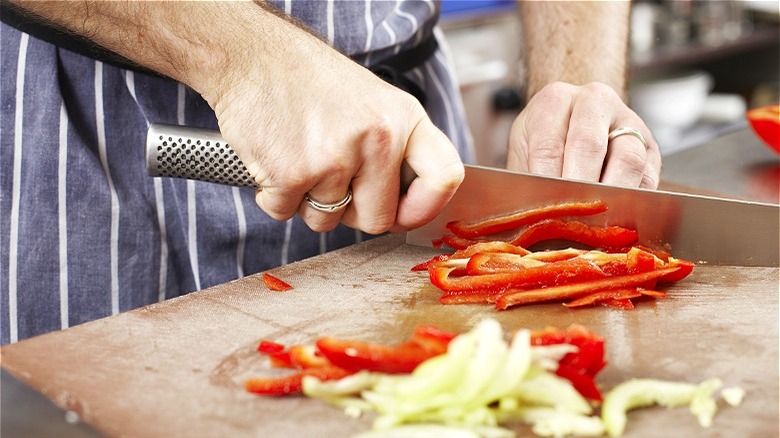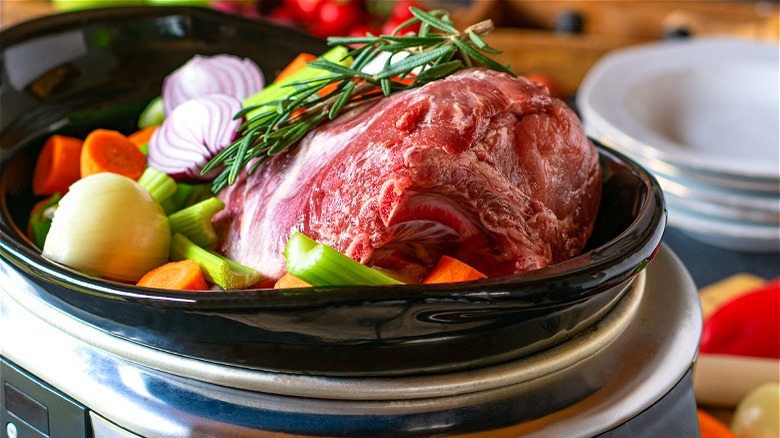Why Your Timing Is Essential To Making Any Slow Cooker Meal
If you have a busy week ahead of you, then you probably have your sights set on simple recipes that can be made without multiple pans and a need for constant monitoring. And slow cookers can be just the solution.
Slow cookers arrived on the mass market sometime in the 1950s, initially labeled as "beanerys," a mode to cook Jewish cholent for the Sabbath day celebration. When the first model was sold to a new company in 1970, major advertising campaigns skyrocketed slow cooker sales in just a few short years. Not only was this appliance helpful for busy working families, but the product also had an undeniable appeal of convenience.
While slow cookers are fairly easy to use and most only have three available settings (low, high, and warm), you might be perplexed about which setting to use for which recipe. A lot of this comes down to timing. Even though slow cookers are convenient, if you misjudge how long your meal needs to cook, you may wind up with an under- or over-cooked meal. Slow cookers essentially heat from the bottom up, increasing in temperature over the surface area and walls of the crock over a span of hours. Because most slow cooker meals require a large chunk of time to cook, planning ahead may be the most important factor when it comes to enjoying a low-prep meal.
How to make the most of your time with slow cooker meals
Before we get into the details, it's important to know the designated temperatures of the high and low settings of your slow cooker so you can plan accordingly. The low setting of a slow cooker typically doesn't go above 180 degrees Fahrenheit; the high setting gets up to 205 degrees. (Keep in mind that these temperatures can differ slightly depending on which model you have.) The best you can do to ensure an adequately cooked meal is to set yourself up for success the night before.
Some of the best slow cooker recipes still take a certain amount of prep time. To make the most of your time and avoid any hassle, wash and prepare your meal's ingredients the night before. On the day of, let your slow cooker come to room temperature before turning on the designated setting. A cold slow cooker takes longer to heat and can directly affect the overall cook time of your dish.
Beyond prepping ahead of time, there are some other factors you should keep in mind to avoid accidentally altering the cooking time of your favorite slow-cooked meals.
Golden rules worth following
Having dinner on the table when you expect it is one of the reasons you might use your slow cooker amidst a busy week. But being conscious of the preparation and cooking processes is key. Apart from planning ahead, there's a good reason you should never overfill your slow cooker with liquid. Too much or too little liquid can affect the overall time your meal takes to cook.
Cover your meat and vegetables sufficiently, but don't overfill your slow cooker; the liquid doesn't cook off. Besides following a recipe's suggested guidelines, try not to fill your slow cooker more than two-thirds of the way. If you're hoping to make a stovetop meal in your slow cooker, reducing the suggested amount of liquid is usually necessary.
Another factor that can alter the time your meal takes to cook is how often the lid has been removed to stir or check the progress of your meal. While occasionally checking the consistency of your meat as the end approaches is reasonable, avoid removing the lid throughout the cooking process — heat can escape and affect the cooking temperature. As long as you can prep some ingredients in advance and resist the urge to tamper with a hot slow cooker, your one-pot meal should be hot and ready to enjoy with no time lost.


